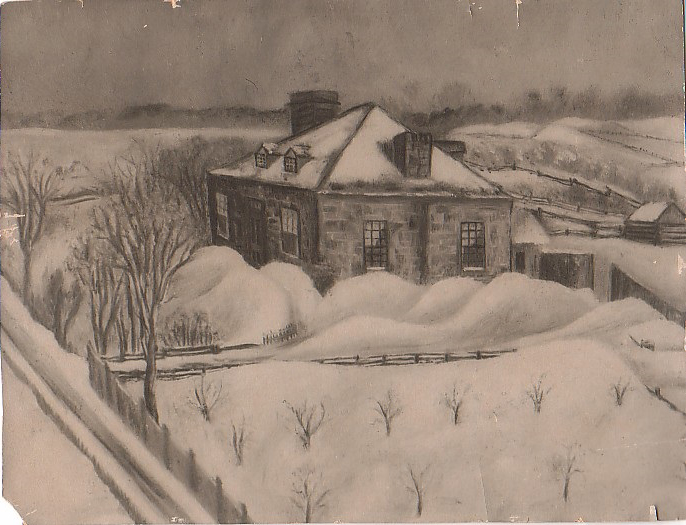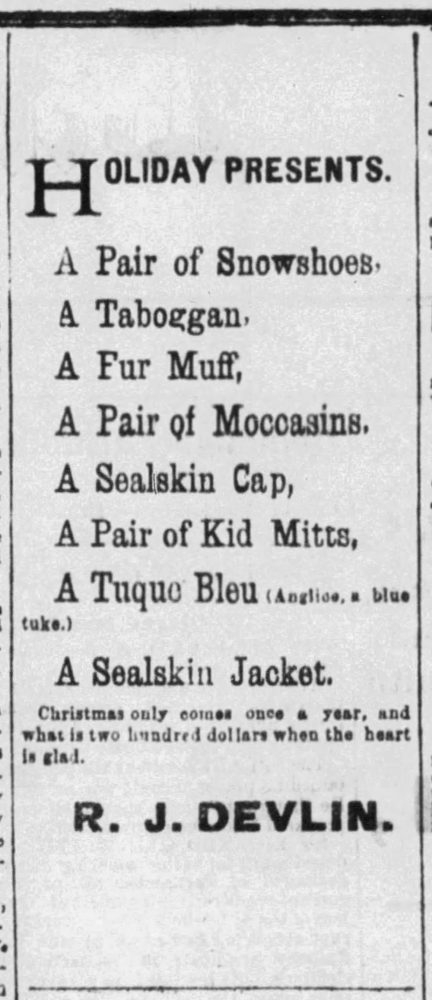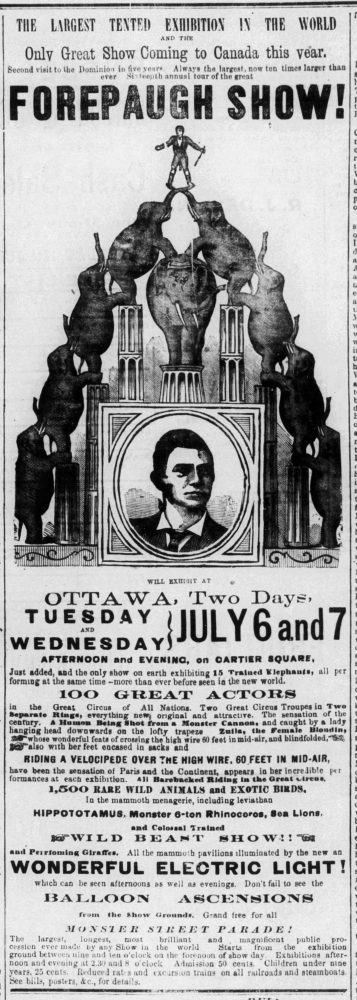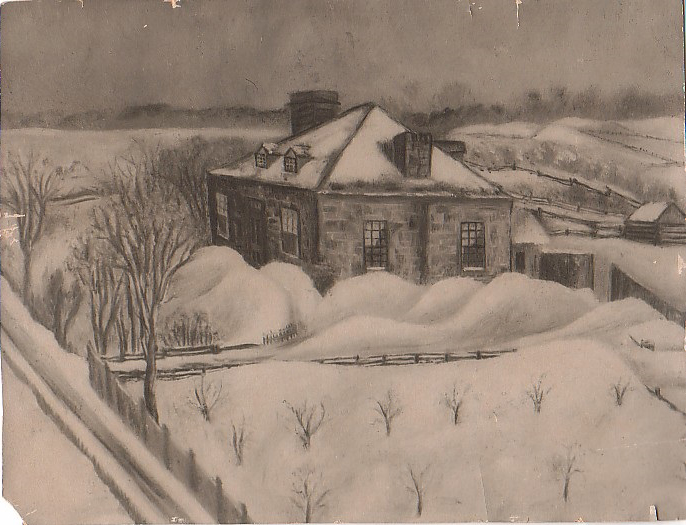
By Dave Allston
140 years ago, Christmastime arrived in Hintonburg. The villagers gathered with their families at home, celebrating together the changing times and the bright future ahead.
Hintonburg of 1880 numbered just 41 houses and a little over 200 residents — a small hamlet in its earliest days, the name barely a year old, selected when the first post office was established.
Ottawa was growing quickly. Its limits reached as far as Booth Street, beyond which was the small lumber village of Rochesterville, and the rail line of the St. Lawrence & Ottawa Railway (today’s O-Train track running south), over which ran old Richmond Road, which then wound its way through the farms of the Nepean Township heading west. Hintonburg was beginning to take shape.
December of 1880 had good weather. Though not quite a green Christmas, Ottawa hadn’t seen snow for 11 days leading up the 25th. The days before Christmas were chilly — temperature swings created a misty-like feel in the mornings, according to newspapers.
Whatever the weather, the spirits of those early Hintonburg settlers would have been high. After a dreary decade of economic recession (known as the “Long Depression”), the economy was on an upswing. Dubbed the “Gilded Age,” it was the start of the second industrial revolution, where the modern city and skyscrapers became prominent. The railways and mills were expanding in the Chaudière and LeBreton areas, their workers fanning out nearby where land was cheap and plentiful. They constructed small, working-class homes shoulder-to-shoulder alongside the impressive villa and farm houses which had previously stood in isolation.
Nationality was strong — Calixa Lavallée’s “O Canada” had debuted earlier that year, construction of the much-anticipated trans-Canada railway was starting and the world was abuzz with the coming magic of electric light. Forepaugh’s travelling exhibition had come to Ottawa that July and, mid-circus, during the elephant’s waltz, three globes suspended from two large posts gave a “brilliant and soft light,” a demonstration inspiring awe. Montreal turned on electric light in its harbour later that summer, allowing for the loading and unloading of ships at night. Within five years, the streets of Ottawa would be lit by electricity. Though these residents of Hintonburg had no electricity, no water service, no sewers, and no streetcars, it was an exciting time to be alive.
With the surging economy, Christmas was experiencing its first forms of commercialization, a fact not lost on the Ottawa merchants who began advertising their Christmas gift-giving wares in the Citizen newspaper, offering everything from prayer books to whips, revolvers and boxing gloves.
For Hintonburg residents, purchasing gifts likely would have meant a trip to the city via horse and buggy, or a long wintery walk — a special excursion.
Hintonburg was self-sufficient. As in Little House on the Prairie’s “Walnut Grove” (the book was set around 1880), the village’s earliest merchants provided essential services to its settlers. Irish-born Duncan Ferguson, one of the village’s oldest residents at 63, operated the grocery store and post office (which stood at today’s southeast corner of Wellington and Sherbrooke). Ferguson constructed a large L-shaped wood-frame store that offered the villagers a wide selection of food, animal feed and general merchandise, akin to the Oleson’s Mercantile.
The village had two butchers: William Allen (north side of Wellington, at the foot of Fairmont) and John Kenna (southwest corner of Parkdale and Scott), who would have been offering meat for the Christmas season, particularly mutton, lamb, geese and turkey.
Hintonburg also had two blacksmith shops: William Powers (south of Wellington, west side of Parkdale) and David Moodie (northeast corner of Stirling); a wagon maker, Andrew Lafleur (southeast corner of Rosemount); a carriage maker, James L. Joyce (near Fairmont); and another small grocer, John Gleeson (southwest corner of Bayswater and Scott). There were also three hotels: the Farmers’ Hotel (southeast corner of Parkdale), Mrs. McGaw’s cramped old inn (northwest corner of Carruthers), and William and Annie Norriss’ “Empress of India Hotel,” more known for its tavern (next to Allen’s butcher shop on Fairmont).
Residents worked at nearby railyards, mills, or local farms (Stewart, Hinton, Clark and Reid), or right in Hintonburg at the H. McCormick & Son mill (northwest corner of McCormick), or where City Centre is today at Thomas and John Martin’s Dominion Flour Mills or George Dalglish’s match factory. The Township Hall on Parkdale (just south of Wellington) was also relatively new (1877).
These shops and services would have also served the 35 families living north of the railway tracks in the eight-year-old Mechanicsville neighbourhood.
There were no churches, no schools, no hospitals, not even a doctor. Residents had to travel over the Cedar Street (Somerset) bridge to Rochesterville for these services — Dr. Malloch was the local MD.

In Hintonburg, the residents prepared for the busy Christmas day. Sand was spread on slippery streets and sidewalks. It was reported on Dec. 22 that snow was needed for sleighing on Richmond Road, “which is nearly bare in some places.”
Entertainment for kids was self-made — tobogganing and skating, or exploring the snow-covered thickly-wooded forest (Pinehurst and Hinchey today), or the caves branching out underneath Carruthers and Rosemount.
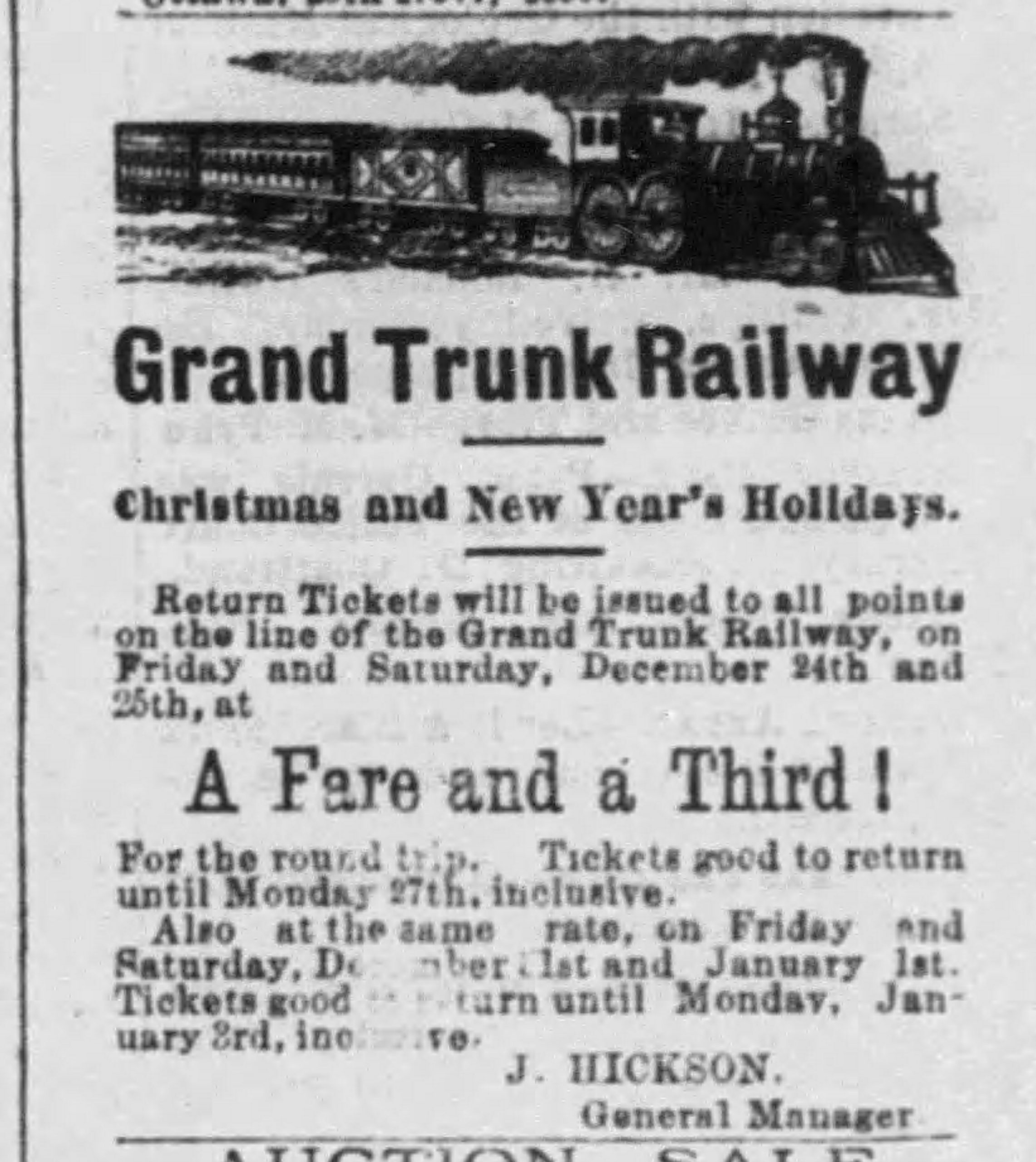
Travelling to see family in the country would have meant bundling up under blankets and robes for a cold ride into Carleton County. Toll for a return trip for a two-horse sleigh to Bells Corners, or beyond, was 15 cents, a considerable cost. For those travelling further, the railways out of Ottawa offered special prices: “A fare plus a third!” advertised the Grand Trunk Railway, for a return ticket with departures on Christmas Eve or Day.
But most wouldn’t have had family to visit. Almost all of Hintonburg’s residents were immigrants from Ireland, Scotland or England, their youngest children being first-generation Canadians.
For those writing back home, the post office delivered the mails to Ferguson’s post office at 11 a.m. each day, and picked up outgoing mail in early afternoon, to get to Ottawa for 3 p.m. dispatch.
Christmas trees were still a novelty, a German tradition brought over recently. The governor general had begun making it an annual spectacle, the raising of a tree at Government House “well covered with presents,” for the children of New Edinburgh. By 1880, the tradition of putting up a tree had probably begun in several Hintonburg homes. Decorations were a popular novelty, with “art needle work” being the “fashionable craze of the day.”
Some of the Hintonburg homes that celebrated Christmas 1880 will see Christmas 2020 feted as well. These include Richmond Lodge, the home of Judge Christopher Armstrong’s widow (on Armstrong at Garland), Mrs. Frances Magee’s stone house (near Stirling), the Fitzgibbon house (part of the Holy Rosary Church today) and Bayne House (on Fuller).
The churches of Ottawa and Rochesterville, where Hintonburg residents would have travelled, featured choirs, lights and decorations for the midnight mass and morning service.
The Bishop of Ontario issued a Christmas pastoral on Dec. 24, with a message about charity, encouraging those unable to give much money to give in kind. The Citizen encouraged philanthropy, editorializing “the picture on the back of a $10 bill makes an excellent Christmas chromo for a poor family.”
The weather on Christmas morning was “cold and clear” when families awoke. Gifts in most homes would have been simple and few, and Santa Claus only visited a fraction of the homes he would today. Perhaps he visited “Elmsleigh,” the Richmond Road home of Richard and Elizabeth Bishop, who had Hintonburg’s largest household with ten children.
At the Protestant Orphans Home in Ottawa, 34 children enjoyed a dinner of turkey, geese and plum pudding, which was also attended by Sir Sandford Fleming and his wife. Prominent Kitchissippi area residents contributed greatly to the festivities — John Durie donated two geese, Judge Ross a turkey and a goose, the McKellar family 20 pounds of lard, and Daniel Cowley donated a load of wood.
Though much has changed, so much remains the same even 140 years later, looking back on 1880 in an era of great promise and potential for the little village of Hintonburg.
